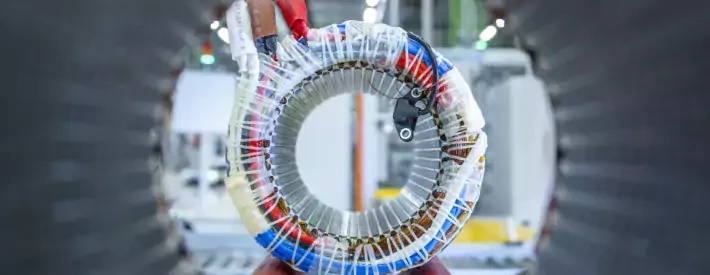Six trends shaping the automotive industry’s future

You don’t have to look far to see how much changing is happening in the automotive sector, but there’s even more coming down the road that will impact the sector. Here are just six of the trends that could change automotive forever…
Artificial intelligence
Sometimes it feels like manufacturers and suppliers are trying to find questions to which AI might be the answer, rather than the other way around, but a handful of companies’ work is showing promise.
A collaboration between Continental and Google puts the latter’s Cloud in the driver’s seat, enabling drivers to naturally converse with their cars rather than just repeatedly barking commands at them. Other outfits are using AI in the context of autonomous vehicles, including buses and that eternal favourite – the driverless pod.
Last-mile delivery
At this year’s IAA Mobility show, a small circuit had been set up in the corner of one of the halls, seemingly for industry executives to blow off steam by riding pedicabs too quickly. But there is clear interest in larger cargo bikes, built for urban deliveries and designed within the 250-watt limit of current e-bike legislation. Some of the exhibitors expressed regret at being part of what they described as “greenwashing”, and legacy OEMs were noticeably absent from this particular part of the show, but there’s clearly a large and growing body of organisations ready to replace the van as we know it.
The weakest link
One particularly interesting development in the world of low-emission tech is chainless drivetrains. German giant Shaeffler is among the manufacturers demonstrating electric drive, on both recumbents and a handful of e-drive bicycles from mobility start-up Mocci. Currently being trialled in Munich, mostly by food delivery riders, the Mocci is touted as a zero-maintenance bicycle, using a chain of electrons rather than physical links – although for now, the first-gen bikes need “oiling” with software updates rather regularly.
Chinese technology
Read the automotive news and its dominated by Chinese manufacturers and suppliers. Their might proven, again at the IAA Mobility show, as most of the cars on display in Messe München’s vast halls were from companies like BYD and XPeng, with many ostensibly European models underpinned by China’s superior battery tech. The new Golf GTI and BMW’s ‘neue klasse’ concept drew the largest crowds, but it’s difficult to ignore the dominance of Chinese brands in more humdrum family SUV segments.
Sensors everywhere
Vehicles interacting with the world is centre stage of automotive’s future. Qualcomm and Samsung are both majoring on their V2X technology, which has been cemented into the industry’s vision by Euro NCAP’s roadmap, while suppliers like Aeva and Hesai have their next-gen Lidar. Continental and its multisensor AI-powered systems give a hint as to what might be coming further down the line, too.
Hydrogen
Lithium is always part of what’s coming in the future conversations, but hydrogen for passenger and freight vehicle applications is still part of the discussion. BMW, which has just finished testing fuel cell iX5s in the UK, has renewed its commitment to hydrogen, partly as a hedge against supply chain issues feeding battery-electric production. It’s clear that hydrogen passenger vehicles remain a small but important part of European manufacturers’ medium-term strategies.




